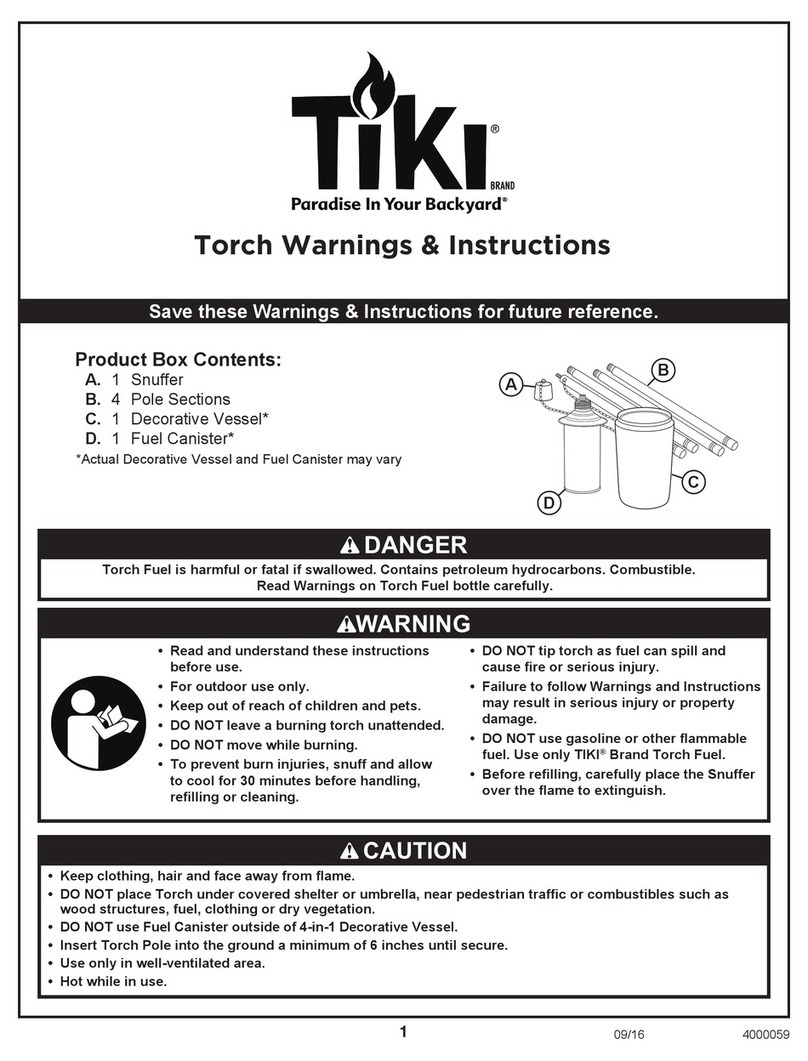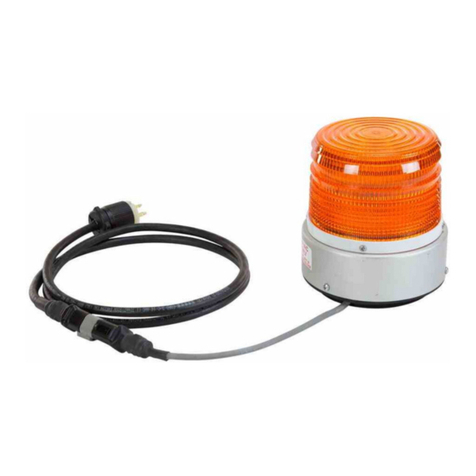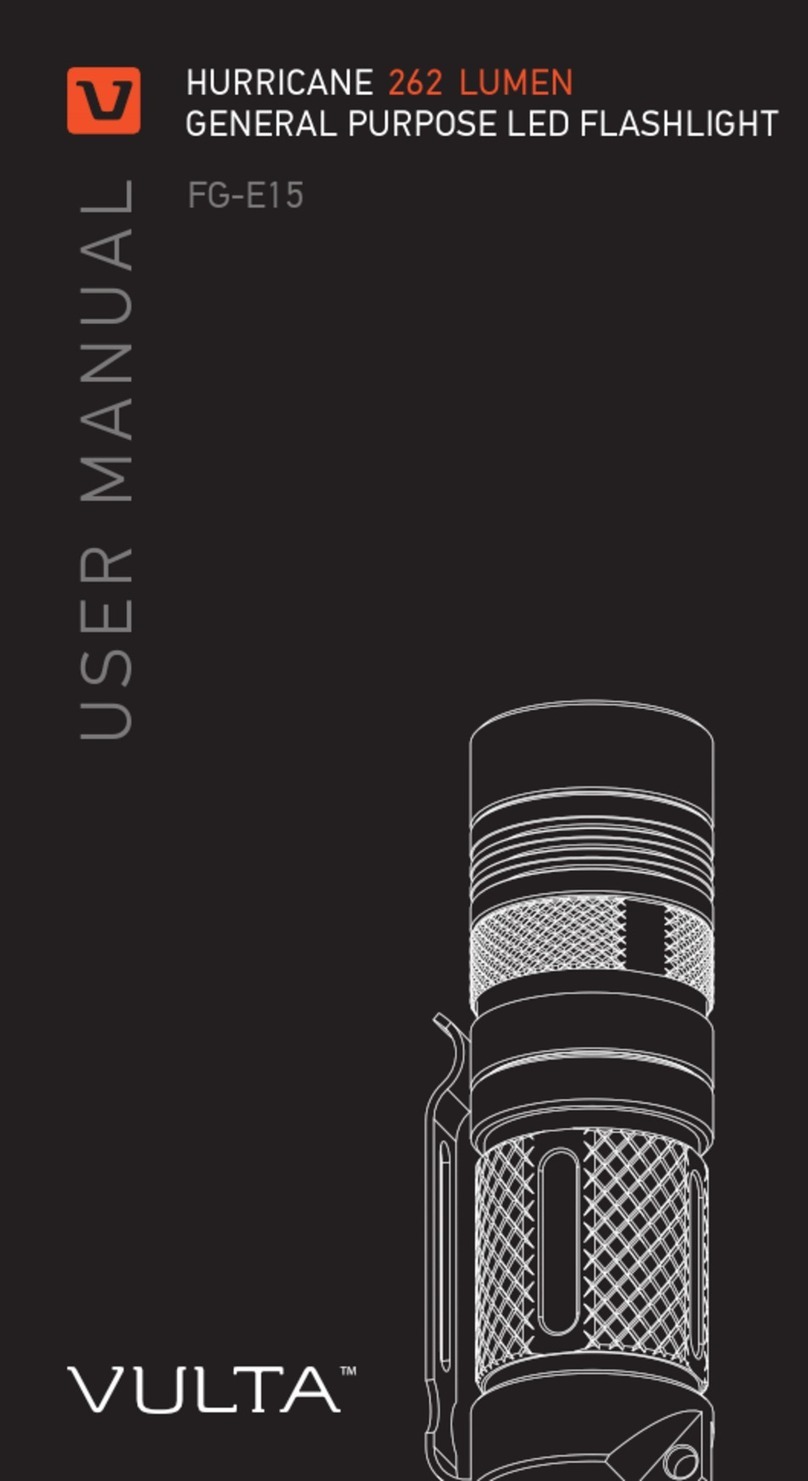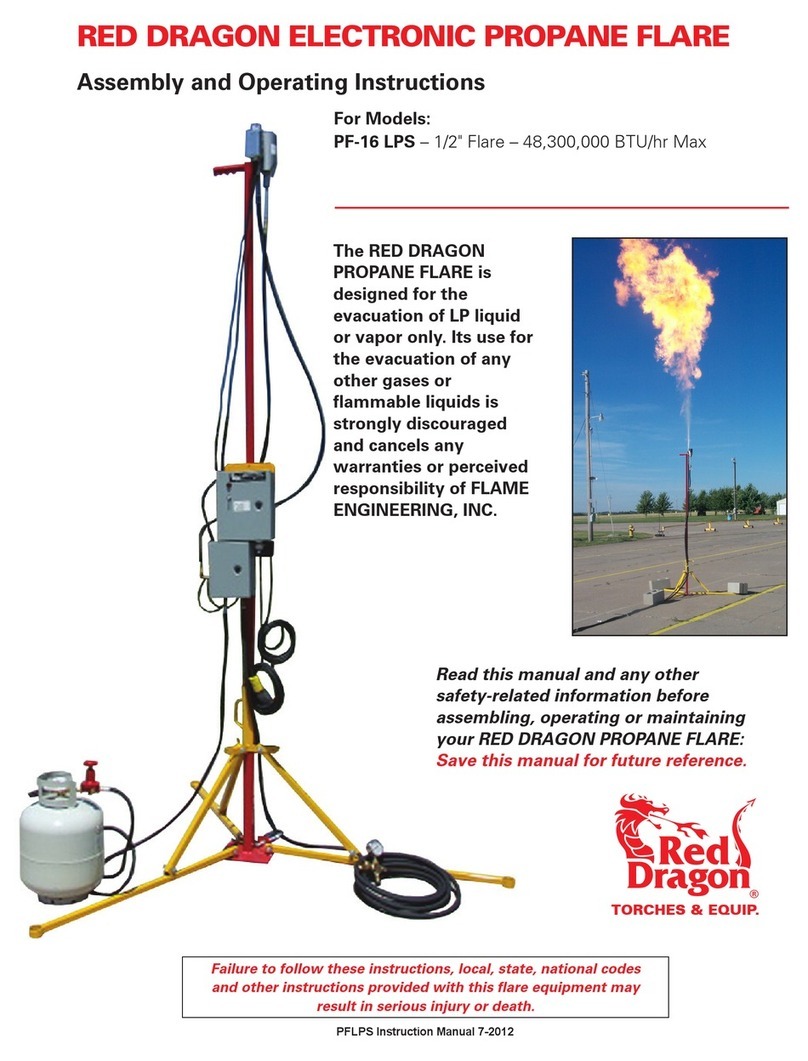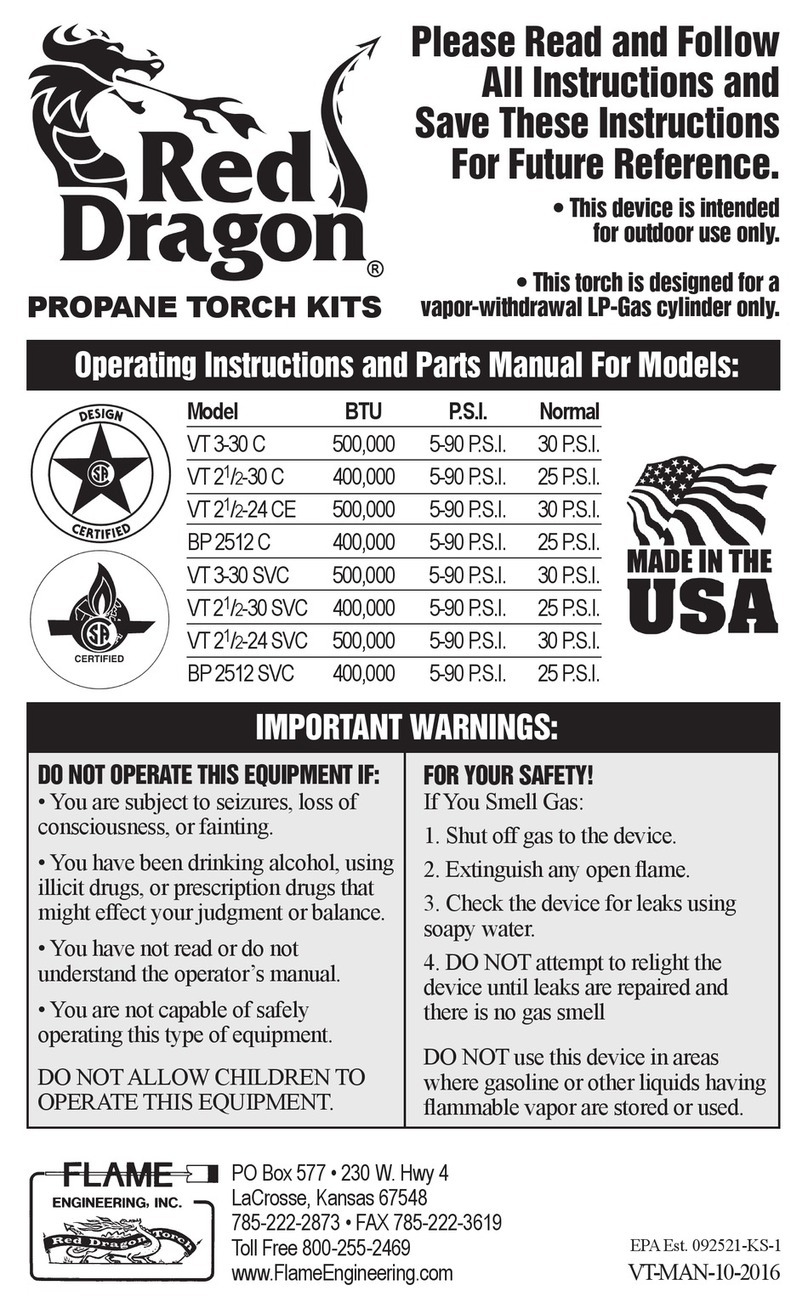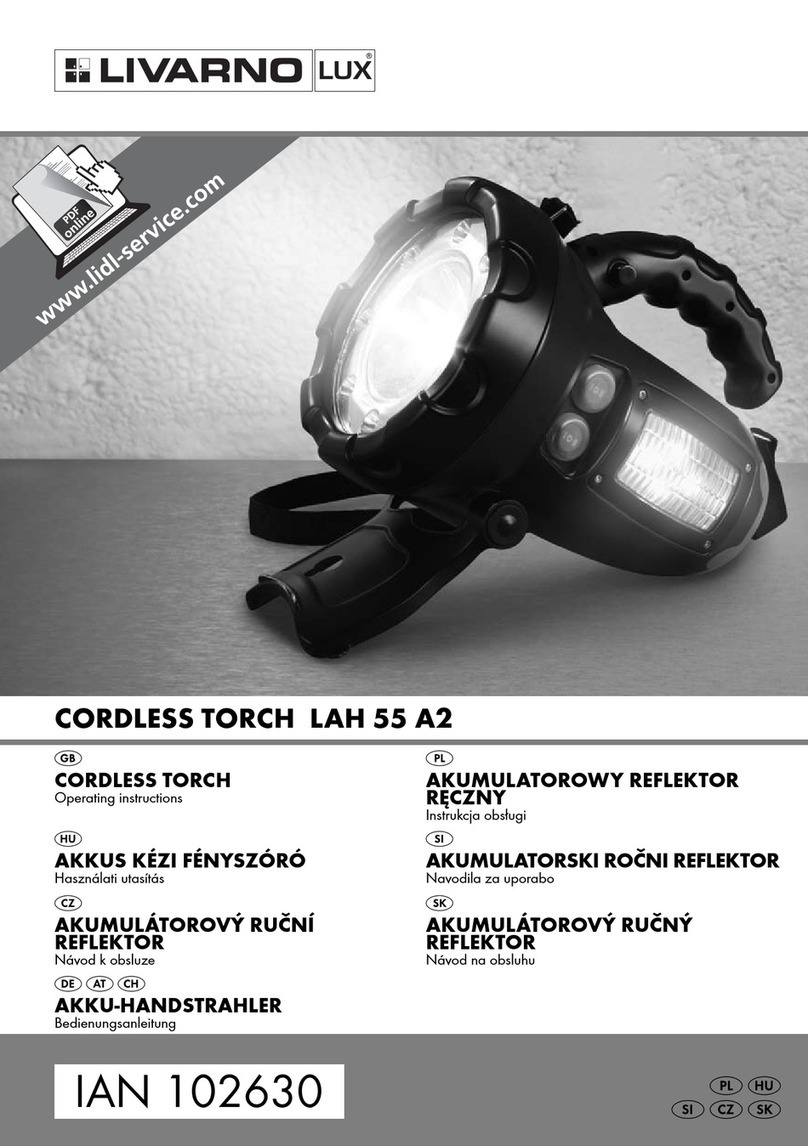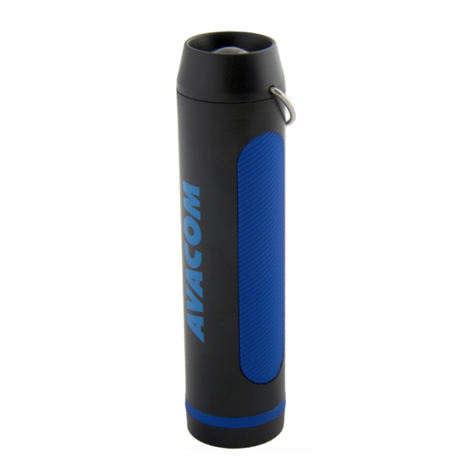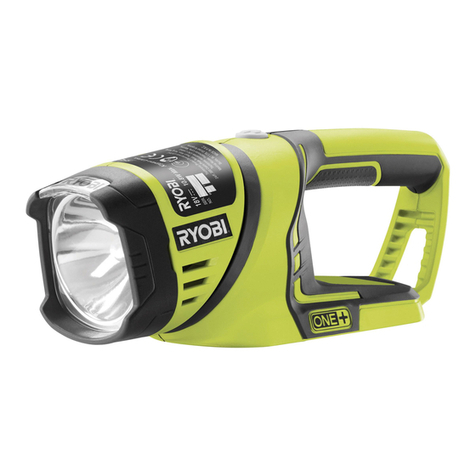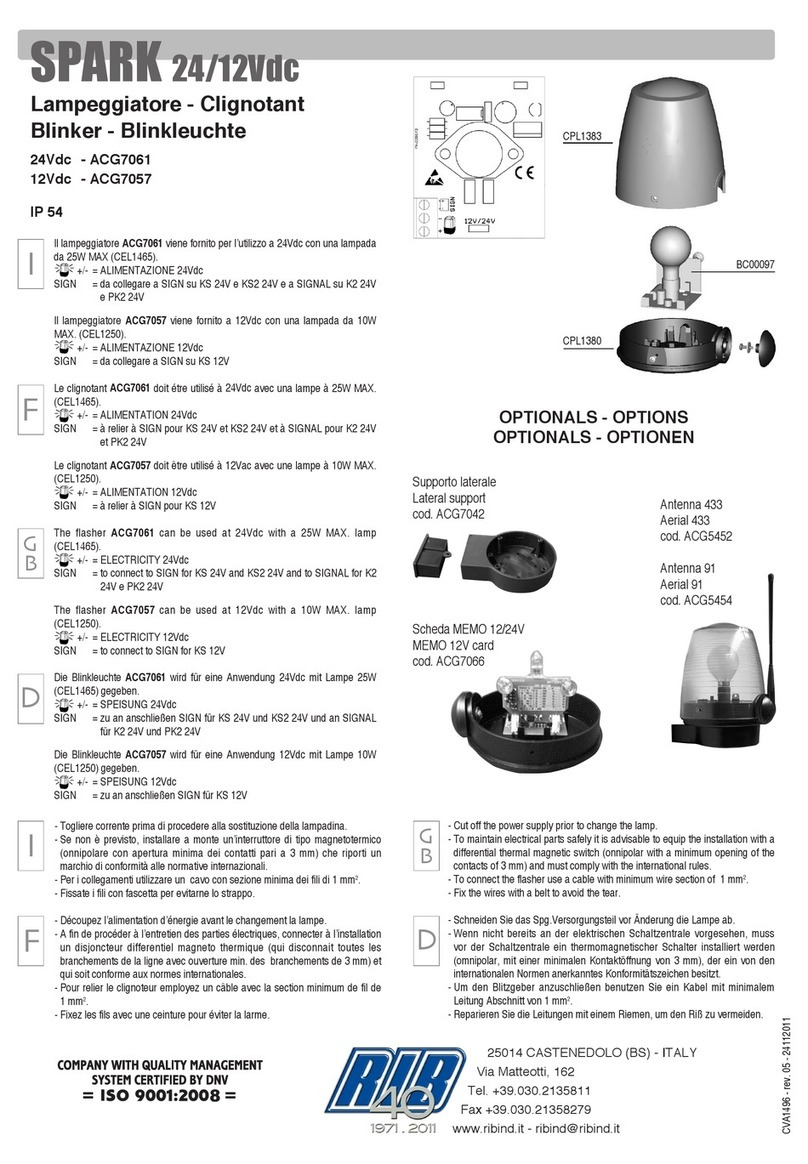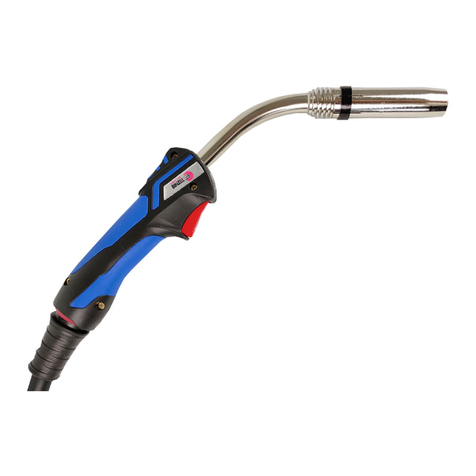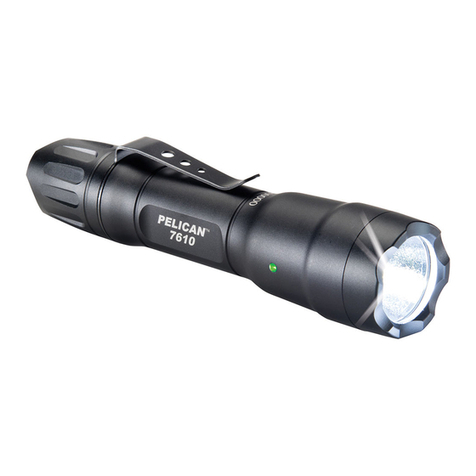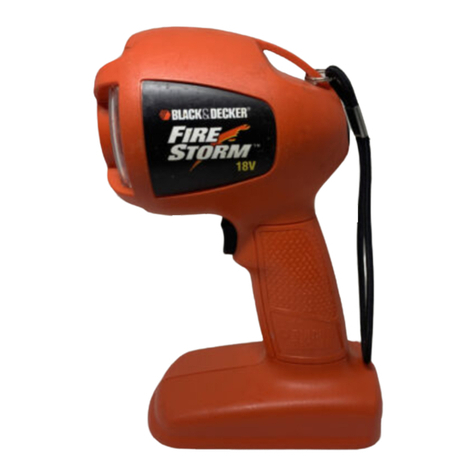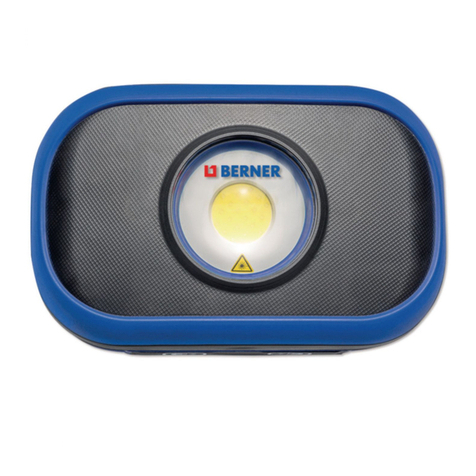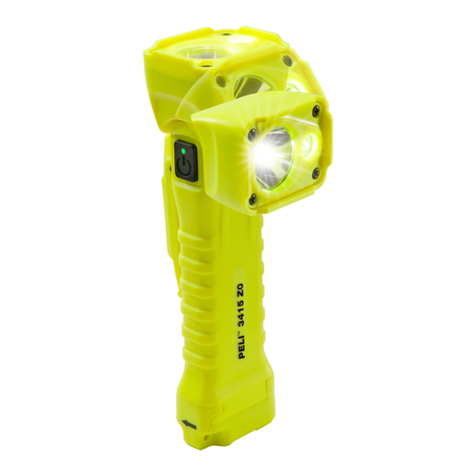Models
JET 4 C JET 410 C JET 8 C
Red Dragon Torches
Operating Instructions & Parts Manual
Please read and retain this information
for future reference.
•This device is intended for outdoor use only.
• This Torch Kit is designed for use with a
Vapor-Withdrawal LP-Gas Cylinder.
FOR YOUR SAFETY!
If You Smell Gas:
1. Shut off gas to the device.
2. Extinguish any open flame.
3. Check the device for leaks using soapy water.
4. DO NOT attempt to relight the device until
leaks are repaired and there is no gas smell
DO NOT use this device in areas where
gasoline or other liquids having flammable
vapor are stored or used.
Note: Unpack and inspect for damage.
1. Using thread compound, connect male end of
hose to OUT fitting of regulator. Tighten
Securely with a wrench.
2. Using thread compound, connect male end of
P.O.L. fitting (brass left hand fitting that screws
into the propane cylinder) to IN fitting of
regulator. Tighten Securely with a wrench.
3. Using thread compound, attach other male end
of hose to the torch. Tighten Securely with a
wrench.
4. See “Connecting To The Supply Cylinder.”
Assembly Instructions
Connecting To The
Supply Cylinder
The propane supply cylinder used with this torch
should be no less than 100 lb. capacity and must be
designed, fabricated, tested and marked in
accordance with regulations of the U.S. Department
of Transportation, the Canadian Transport
Commission or the Interstate Commerce
Commission. Supply cylinders must be arranged
to provide for vapor withdrawal from the
operating cylinder.
1. Inspect the nut/nipple of the P.O.L. connection on
the LP-Gas hose. Check for dents or physical
damage. The O-ring should be present on nipple
fitting. If damage is evident, call for replacement
parts.
2. Be certain the supply cylinder valve is fully
turned off. Remove the protective plastic plug
from the cylinder valve outlet connection.
Continued
Never attempt to store the torch while it is hot.
When the torch is stored indoors, the
connection between the LP-Gas supply cylinder
and the torch must be disconnected and the
cylinder removed form the torch and stored in
accordance with Chapter 5 of ANSI/NFPA 58,
the standard for storage and handling of
liquefied petroleum gases. Do not store the
torch in locations where it may be damaged.
WARNING
The gas supply hose shall be protected from
traffic, building materials and contact with hot
surfaces during use and while in storage.
• Surfaces of the torch may be cleaned with soap
or detergent and water solutions. Do not use
petroleum-based cleaners to clean any
components of the torch or the torch body.
• Remove any debris and combustible material
from the torch. The torch must be kept clear and
free from combustible materials, gasoline and
other flammable vapors and liquids.
•The supply hose assembly shall be visually
inspected prior to each torch use. If there is
excessive abrasion or wear , or the hose is cut, it
must be replaced prior to the torch being put into
operation. The replacement hose assembly shall
be specified by Flame Engineering, Inc. Contact
Flame Engineering for further information.
Storage
Maintenance
JET C-INST-ENG-9-2010
WARNING:
DO NOT OPERATETHIS EQUIPMENT IF:
• You are subject to seizures, loss of consciousness,
or fainting.
• You have been drinking alcohol, using illicit
drugs, or prescription drugs that might effect your
judgment or balance.
• You have not read or do not understand the
operator’s manual.
• You are not capable of safely operating this type
of equipment.
DO NOT ALLOW CHILDRENTO OPERATE
THIS EQUIPMENT.
FLAME ENGINEERING, INC.
PO Box 577 • W. HWY 4
LaCrosse, Kansas 67548
785-222-2873 • FAX 785-222-3619
Toll Free 800-255-2469
www.FlameEngineering.com
1. Slowly open the LP-Gas cylinder valve. Check
all gas connections to the torch for leaks with a
leak detection solution, such as soapy water.
Leaks will be indicated by forming bubbles
around the source. Please allow one minute for
bubbles to appear. Repair all leaks and test for
leaks prior to lighting torch.
2. Familiarize yourself with the functions of the
squeeze valve operations. The pilot valve knob
is used for lighting the torch and adjusting the
pilot flame. Once the desired pilot flame is
achieved, the squeeze handle is depress to give
the required working flame pattern. continued
Lighting Instructions
IMPORTANT NOTE
• If no leaks are found, proceed with lighting the
torch.
• Always use a flint lighter to ignite the torch.
DO NOT USE MATCHES OR CIGARETTE
LIGHTER TO IGNITE THE TORCH.
• Be certain the flame adjusting valve is closed
before opening the LP-Gas cylinder valve.
Connecting To The Supply Cylinder Cont.
3. Connect the P.O.L. nut/nipple fitting on the
hose to the propane supply cylinder by turning
the left hand threaded P.O.L. nut counter
clockwise into the cylinder valve outlet. Snug
the connection tight with a wrench. DO NOT
OVER TIGHTEN.
4. Be certain the flame adjusting valve is closed
before opening the LP-Gas cylinder valve.
5. Slowly open the cylinder valve. Check all
LP-gas connections for leaks using soapy water
or suitable leak detection solution. DO NOT
USE MATCHES OR OPEN FLAME TO
CHECK FOR LEAKS. Do not attempt to
operate the torch if there is evidence of a leak
or at any time the odor of gas is detected.
